
Ashley Yeager is the associate news editor at Science News. Previously, she worked at The Scientist, where she was an associate editor for nearly three years. She has also worked as a freelance editor and writer, and as a writer at the Simons Foundation, Duke University and the W.M. Keck Observatory. She was the web producer for Science News from 2013 to 2015, and was an intern at the magazine in the summer of 2008. She holds a bachelor’s degree in journalism from the University of Tennessee, Knoxville, and a master’s degree in science writing from MIT. Her book, Bright Galaxies, Dark Matter and Beyond, on the life of astronomer Vera Rubin, will be published by MIT Press in August.

Trustworthy journalism comes at a price.
Scientists and journalists share a core belief in questioning, observing and verifying to reach the truth. Science News reports on crucial research and discovery across science disciplines. We need your financial support to make it happen – every contribution makes a difference.
All Stories by Ashley Yeager
-
 Genetics
GeneticsThese genes may be why dogs are so friendly
Dog domestication may be the result of just a few genetic changes, including ones that made canines more interested in interacting with people.
-
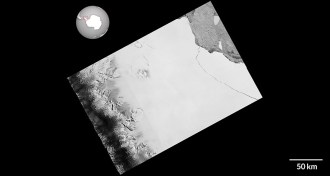 Earth
EarthDelaware-sized iceberg breaks off Antarctic ice shelf
An iceberg about the size of Delaware splintered from the Larsen C ice shelf in one of the largest calving events ever recorded.
-
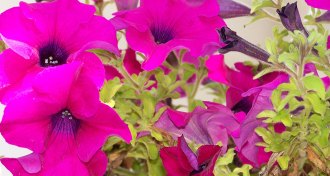 Plants
PlantsPetunias spread their scent using pushy proteins
Scent molecules hitch a ride on a particular protein to escape flowers.
-
 Science & Society
Science & SocietyLatest stats are just a start in preventing gun injuries in kids
New stats on firearm deaths and injuries are disturbing, but the picture to make policy is far from complete, researchers say.
-
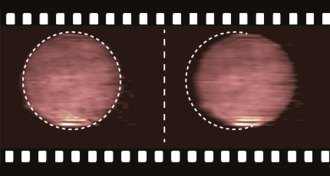 Tech
TechNew video camera captures 5 trillion frames every second
A new camera’s record-breaking speed offers researchers a window into never-before-seen phenomena, such as combustion reactions.
-
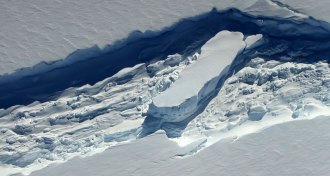 Earth
EarthAntarctica’s Larsen C ice shelf is within days of completely cracking
The crack in Antarctica’s Larsen C ice shelf grew another 17 kilometers between May 25 and May 31, 2017 and is at risk of breaking off a massive iceberg.
-
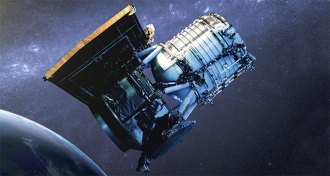 Planetary Science
Planetary ScienceCitizen scientists join the search for Planet 9
Backyard Worlds: Planet 9, a citizen science project, lets space enthusiasts search for undiscovered objects in the sky, including a hypothesized planet at the far reaches of the solar system.
-
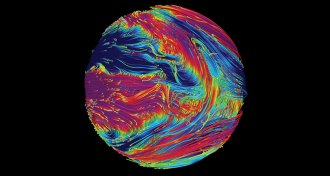 Astronomy
AstronomyMagnetism disrupts winds on ‘hot Jupiter’ exoplanet
Simulations of HAT-P 7b’s magnetic field give clues to why the exoplanet’s winds blow both east and west.
-
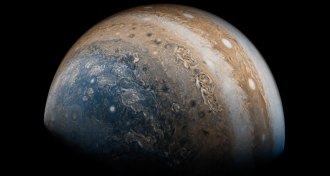 Planetary Science
Planetary ScienceJuno spacecraft reveals a more complex Jupiter
NASA’s Juno spacecraft has sent back unexpected details about Jupiter, giving scientists their first intimate look at the giant planet.
-
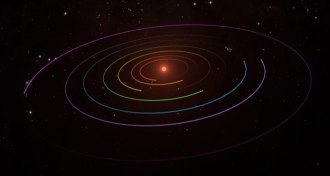 Planetary Science
Planetary ScienceTRAPPIST-1’s seventh planet is a chilly world
Follow-up observations of TRAPPIST-1 and its seven planets reveals details about the outermost one.
-
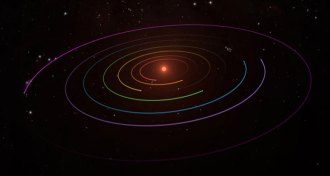 Planetary Science
Planetary ScienceTRAPPIST-1’s seventh planet is a chilly world
Follow-up observations of TRAPPIST-1 and its seven planets reveals details about the outermost one.
-
 Environment
EnvironmentWhen it’s hot, plants become a surprisingly large source of air pollution
During a heat wave, trees and shrubs can sharply raise ozone levels, a new study shows.